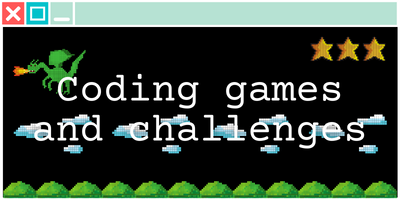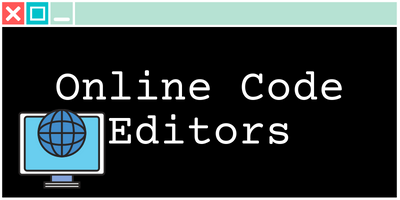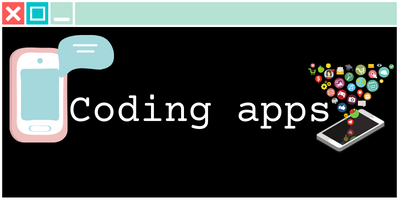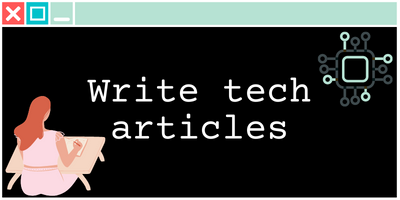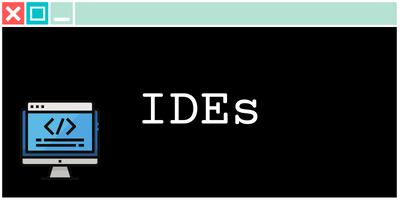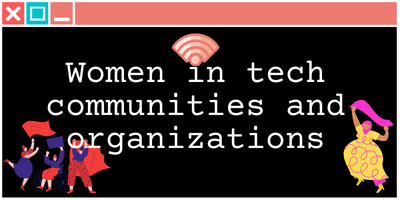Agile cheat sheet for beginners
Agile is a popular and effective approach to software development that has gained popularity in recent years. Agile focuses on flexibility, collaboration, and iterative development to deliver better products faster. If you’re new to Agile, it can be overwhelming to understand all of the terminology, methodologies, and best practices involved. That’s why we’ve put together this cheat sheet to help you get started. In this guide, we’ll cover the basics of Agile, including the 12 Agile principles, popular Agile frameworks, Agile ceremonies, and Agile artifacts. We’ll also explore the benefits of using Agile in software development and provide some additional resources to help you continue learning.
What is Agile?
Agile is a way of making software that is different from the traditional way. It is more flexible and focuses on making customers happy. Instead of doing everything in a specific order, Agile developers work on small parts of the software at a time and get feedback from the customer often. This way, the customer can see what is being made and can change their mind about what they want. Agile also encourages teamwork, communication, and being able to change the plan quickly. By using Agile, developers can make software better and faster while making sure the customer is happy.
Agile Principles
The Agile Manifesto is a set of guiding values and principles for software development. It was created in 2001 by a group of software developers who wanted to promote a more flexible, collaborative, and customer-focused approach to software development. The manifesto itself is short and concise, but it has been further elaborated upon by the 12 Agile Principles, which provide more detailed guidance for applying the Agile Manifesto in practice. These principles help development teams to prioritize the right things, work effectively together, and continuously improve their processes. Each principle plays an important role in the Agile methodology and supports the overarching goal of delivering high-quality software that meets the needs of the customer.
1 - Customer satisfaction through early and continuous software delivery
7 - Working software is the primary measure of progress
2 - Accommodate changing requirements throughout the development process
8 - Agile processes promote sustainable development. The pace of work should be maintainable indefinitely
3 - Deliver working software frequently, with a preference for shorter timescales
9 - Continuous attention to technical excellence and good design enhances agility
4 - Collaboration between business stakeholders and developers throughout the project
10 - Simplicity is essential. Maximize the work not done
5 - Build projects around motivated individuals and give them the support they need
11 - Self-organizing teams encourage great architectures, requirements, and designs
6 - Use face-to-face communication whenever possible
12 - Regularly reflect on teamwork, processes, and effectiveness, and adjust accordingly
Agile Frameworks
Agile Frameworks are specific methodologies that apply the Agile principles in a practical way. These frameworks provide more specific guidance and structure for Agile development teams to work within. Some of the most popular Agile Frameworks include Scrum, Kanban, and Extreme Programming (XP).
Scrum is perhaps the most widely used Agile Framework. It is characterized by a set of roles, ceremonies, and artifacts, such as sprints, daily stand-up meetings, and product backlogs, that help teams organize and manage their work effectively. Scrum emphasizes teamwork, communication, and transparency, and it prioritizes delivering value to the customer early and frequently.
Kanban is another Agile Framework that focuses on visualizing work and optimizing flow. Kanban boards display the status of work items in different stages of completion, allowing teams to track progress and identify bottlenecks. Kanban emphasizes continuous improvement and encourages teams to limit work in progress to improve efficiency and quality.
Extreme Programming (XP) is an Agile Framework that emphasizes technical practices such as test-driven development, pair programming, and continuous integration. XP also promotes a high level of customer involvement and feedback, as well as regular releases of working software.
Other Agile Frameworks include Lean Software Development, Crystal, and Feature-Driven Development. Each Agile Framework has its own unique approach and benefits, but all are based on the Agile principles and aim to deliver high-quality software that meets the needs of the customer.
Agile Ceremonies
Certainly! Agile Ceremonies are meetings or events that take place within an Agile Framework. These ceremonies help teams to organize their work, communicate effectively, and ensure that everyone is on the same page. Here are some of the most common Agile Ceremonies:
Sprint Planning
This is a meeting at the beginning of each sprint where the team decides what they will work on during the sprint. The team discusses the items in the product backlog and selects the ones they will focus on in the upcoming sprint.
Daily Stand-up
This is a short, daily meeting where team members update each other on their progress and any impediments they are facing. It is an opportunity to keep everyone informed and identify any potential roadblocks.
Sprint Review
This is a meeting at the end of each sprint where the team demonstrates the working software they have produced during the sprint. The customer and other stakeholders provide feedback on the software, and the team decides what they will focus on in the next sprint.
Sprint Retrospective
This is a meeting at the end of each sprint where the team reflects on their performance and identifies ways to improve. The team discusses what went well, what didn’t go well, and what they can do differently in the next sprint.
In addition to these common Agile Ceremonies, some frameworks may also include other events such as backlog refinement sessions, product demos, or iteration reviews. Agile Ceremonies help teams to stay organized, communicate effectively, and continuously improve their processes.
Agile Artifacts
Agile Artifacts are documents or items that provide important information for Agile teams. These artifacts are used to communicate information about the product, project, or process to team members and other stakeholders. Here are some of the most common Agile Artifacts:
Product Backlog
This is a prioritized list of all the work that needs to be done for the product. It contains user stories, features, bugs, and other items that describe the functionality or requirements for the product.
Sprint Backlog
This is a subset of the Product Backlog that the team has committed to delivering during the current sprint. The Sprint Backlog is created during Sprint Planning and is used to guide the team's work during the sprint.
Burn-down Chart
This is a chart that shows the progress of the team during the sprint. It tracks the remaining work in the Sprint Backlog and shows whether the team is on track to complete the work by the end of the sprint.
Definition of Done
This is a document that describes the criteria that must be met for a user story or feature to be considered complete. It helps ensure that the team delivers high-quality work that meets the customer's needs.
Release Plan
This is a high-level plan that outlines the features or functionality that will be included in a future release of the product. It helps the team and stakeholders to understand the timeline and scope of the project.
Benefits of Agile
There are many benefits to using Agile in software development. Here are some of the most significant:
Customer satisfaction
Agile puts the customer at the center of the development process. This means that the customer is involved throughout the project and has the opportunity to provide feedback and make changes as needed. This results in a product that better meets the customer's needs and leads to higher customer satisfaction.
Flexibility
Agile is designed to be flexible and adaptable to change. This means that the team can respond quickly to changes in the project scope, requirements, or timeline. This allows the team to be more responsive to the customer's needs and to deliver a better product.
Improved quality
Agile emphasizes continuous testing and feedback, which helps to identify and fix issues early in the development process. This leads to a higher quality product that is more stable and reliable.
Faster time-to-market
Agile's focus on iterative development and rapid feedback allows teams to deliver working software faster than traditional development methods. This means that the product can get to market more quickly and start generating revenue sooner.
Better team collaboration
Agile emphasizes teamwork, communication, and collaboration. This helps to build a more cohesive and effective team that is better able to work together to achieve project goals.
More ressources
Sure, here are some additional resources that readers can use to learn more about Agile:
-
Agile Alliance – A non-profit organization that promotes Agile software development principles and practices: https://www.agilealliance.org/
-
Scrum.org – A resource for all things Scrum, including training, certification, and community resources: https://www.scrum.org/
-
Agile Manifesto – The official Agile Manifesto website, which outlines the core principles of Agile software development: https://agilemanifesto.org/
-
Atlassian Agile Coach – A comprehensive guide to Agile software development, including Agile methodologies, tools, and best practices: https://www.atlassian.com/agile
-
Agile Methodology – A beginner’s guide to Agile software development, including an overview of the Agile framework and its core principles: https://www.cio.com/article/3156998/agile-methodology-a-beginners-guide.html
-
Agile for Dummies – A comprehensive guide to Agile software development, including an introduction to Agile, Agile methodologies, and Agile tools: https://www.dummies.com/business/project-management/agile-for-dummies-cheat-sheet/
These resources should provide readers with a good foundation for learning more about Agile software development and exploring the different methodologies, tools, and best practices associated with it.
Conclusion
Agile is a powerful approach to software development that emphasizes flexibility, collaboration, and iterative development. By putting the customer at the center of the process, emphasizing teamwork and communication, and focusing on continuous testing and feedback, Agile can help teams to deliver better products faster. With this cheat sheet, we hope to provide you with a solid foundation for understanding the basics of Agile and to help you explore the different methodologies, tools, and best practices associated with it. Remember, Agile is a continuous learning process, so don’t be afraid to experiment, try new things, and continue learning along the way.
Tools I use for this site
- I buy all my domain names on Namecheap, as thetrendycoder.com
- The hosting of this website is made on Bluehost.
- The website is created with WordPress.org (and not WordPress.com).
- I use the page builder Elementor because it makes it easy to create modern pages with drag and drop.
- I have multiple websites, and on most of them, I use themes from wpKoi. I love their design, they are very original and work well with Elementor.
- All the designs and images are created using canvas.
- I use Grammarly and languagetool to correct all my spelling and grammar mistakes.
- SEO is a big thing on a website, I use a WordPress plugin called YoastSEO to help me with the basic analysis. I also use a tool called Keysearch for choosing the right keywords.
- To handle affiliate links, I use two platforms: impact and ShareASale.
You want to write on TheTrendyCoder ?
If you are interested in publishing guest articles on this website, sharing your experience or coding tutorials, apply through this form.
NO EXPERIENCE needed!
NO PERFECT English needed!
NO DEGREE needed!
NO AGE limits!
No matter at what stage we are in our tech journey, we all have learned things and experienced things. Sharing them can help others and even help us. So, if you are a student, a professional, or a self-taught coder, feel at home and share some of your knowledge with the community.
More cheatsheets
The Ultimate iptables Cheat Sheet
/*! elementor - v3.12.1 - 02-04-2023 */ .elementor-heading-title{padding:0;margin:0;line-height:1}.elementor-widget-heading .elementor-heading-title[class*=elementor-size-]>a{color:inherit;font-size:inherit;line-height:inherit}.elementor-widget-heading .elementor-heading-title.elementor-size-small{font-size:15px}.elementor-widget-heading .elementor-heading-title.elementor-size-medium{font-size:19px}.elementor-widget-heading …
Agile cheat sheet for beginners
/*! elementor - v3.12.1 - 02-04-2023 */ .elementor-heading-title{padding:0;margin:0;line-height:1}.elementor-widget-heading .elementor-heading-title[class*=elementor-size-]>a{color:inherit;font-size:inherit;line-height:inherit}.elementor-widget-heading .elementor-heading-title.elementor-size-small{font-size:15px}.elementor-widget-heading .elementor-heading-title.elementor-size-medium{font-size:19px}.elementor-widget-heading …
OWASP Cheat Sheet for beginners
OWASP cheat sheet for beginners As cyberattacks become increasingly sophisticated and …
